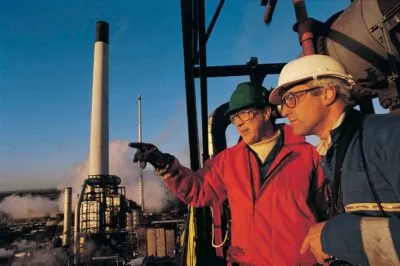It’s well-known that products and process have life cycles. Products are made from raw materials, transported, used, and eventually disposed of – and the same is true for transformer oil. During each stage of the life cycle of transformer oil (which consists of exploration, drilling, extraction, transportation, storage, refining, distribution, use/reuse, disposal/recycling), we see products and processes interact with the environment.
Life cycle thinking typically considers the “cradle-to-grave” implications of actions, and it acknowledges that the responsibilities of manufacturers and consumers are not limited to those life cycle phases in which they are directly involved. The implications here are that when the transformer oil reaches its end of life that the greatest GHG savings or emissions can happen, depending on the final decisions industries make over the fate of the oil.
End-of life scenarios for mineral transformer oil
Mineral transformer oil is a unique product in that although it is a hydrocarbon, its intended use is not as a fuel for combustion. It contains embodied energy, but this energy need never be released. This has strong implications for reusing the oil, especially when environmental aspects are considered.
The possible end of life scenarios for mineral transformer oil (ranked in terms of GHG (Greenhouse Gas) efficiency) are:
- Rejuvenating for reuse in intended applications
- Rejuvenating for reuse in alternate applications
- Blending for reuse in various applications
- Destruction by incineration with energy recovery
What to do with old transformer oil?
When ex-service transformer oil is re-refined into new transformer oil, the resource is recovered at its highest net resource value. Sadly, this technology is no longer available in Australia. Some power utilities choose to filter or even regenerate ex-service transformer oil with a view to re-using it in less critical assets. While this re-use is in line with the tenets of the “waste hierarchy”, eventually the oil becomes unfit for service and will succumb to another fate.
Used transformer oil can also be put through basic refining steps like multistage filtration, gentle heating and drying to create a new product with broad industrial functionality, making it suitable for a wide range of industrial applications.
The physical properties of ex-service transformer oil make it useful for re-use as a blended base for some lubricant products. Again, while this re-use is in line with the tenets of the “waste hierarchy”, eventually the oil becomes unfit for use, and since the ex-service transformer oil has been blended with other products, it has become contaminated, and its unique electrical insulating properties are lost forever.
Energy recovery by burning at high temperatures is still recognised as a method of disposal that is environmentally acceptable, i.e., burning for energy recovery, does in fact constitute “recycling”. But, when consumed for energy only by using as a fuel, the unique electrical insulating properties of transformer oil are lost forever in return for a one off, lower resource value application.
Access our range of solutions for used transformer oil
Benzoil offer decades of hands-on expertise in industrial waste and recovery solutions. With an emphasis on environmentally sound best practices and deriving the highest net resource value from waste products like transformer oil, legacy materials, chemical by-products, and waste stockpiles, we offer your industry fully compliant end-to-end solutions for waste management and recycling. Contact our team today to chat about best practice solutions for your used mineral transformer oil.





